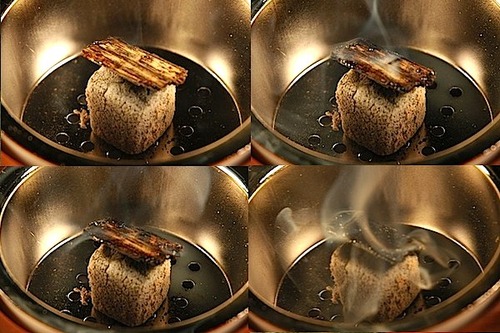Religious leaders have contended for millennia that burning incense is good for the soul. Now, biologists have learned that it is good for our brains too. An international team of scientists, including researchers from Johns Hopkins University and the Hebrew University in Jerusalem, describe how burning frankincense (resin from the Boswellia plant) activates poorly understood ion channels in the brain to alleviate anxiety or depression.
They found that the compound significantly affected areas in brain areas known to be involved in emotions as well as in nerve circuits that are affected by current anxiety and depression drugs.
James: I use incense to show my gratitude to Buddha for bringing us the Dharma but I also use it because I too have found it to be very relaxing, tranquil and thus conducive to meditation as now proven by science. I find it very rejuvenating to catch a scent of sweet smelling incense while concentrating upon my breath much like lying in a mountain meadow and taking in the smell of fresh flowers with eyes closed. And speaking of eyes closed, I have noticed that when I close my eyes in meditation that the scent of the incense stands out more in my mind.. This is probably similar to how when some go blind that their other senses are heightened.
James: I have found too that incense helps me concentrate and focus my attention back to the present moment when I meditate as the incense burns throughout my sessions. This is because when I feel like my mind is doing intellectual somersaults I breath in and out for a bit and the scent brings me back to the present moment.
Also, the burning of incense helps to create a positive state of mind and helps condition the mind to associate the typical fragrance with a positive and calm mind.
James: For myself, Aloes wood reminds me of smells that I enjoyed in Africa, which was a very happy time in my life so when I burn it while meditating it helps me recognize happiness that is always present in each moment if I’m mindful enough. And Nag Champa reminds me of the Nepal-Tibet Imports store where I buy all of my incense and altar items. I always feel relaxed in that shop with all the nice smells,, beautiful Buddha statues and the nice family that runs it.
Sandalwood is another favorite of mine and has been used by Buddhists, Hindus and others for 4,000 years. Its special calming effect has been used to treat anxiety and depression, and it acts as a mild sedative. It’s one of my favorite incenses for those reasons but also for it’s woody smell that reminds me of the woody smells of my favorite camping spot way up in the Rocky Mountains here in Colorado.
And smelling that woody smell reminds me that I am one with all things, which makes me feel small in a good way, in the sense of reducing my ego and just enjoying being no different than a sweet, woody scented pine tree. Trees are rooted deeply in the Earth and smelling that woody scent helps me feel rooted in the present moment and that there is much beauty and peace to be had in this world of suffering. It relaxes me because I have spent so many peaceful, happy days up in those mountains. It is one of my favorite places to meditate because of the fresh air, scents of sweet and woody pine trees and the crisp breeze that often blows through the area.
However, because of it being smoke I try and keep a bit of distance between myself and the burning incense. Also when the weather is nice I will crack open a window a bit to circulate fresh air.








